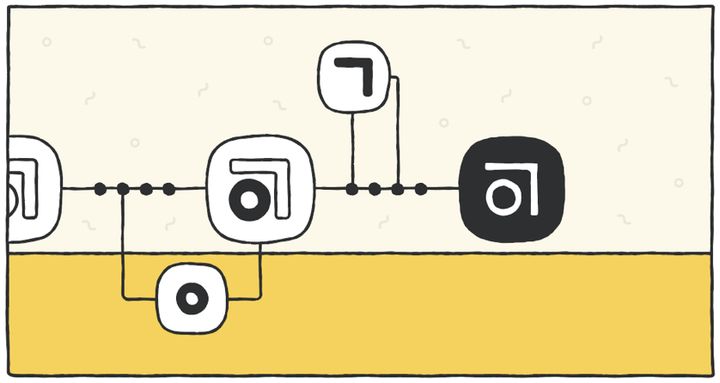
Designers are a flexible bunch. They adapt existing tools and process to do their work. And while products like Sketch, Illustrator and Figma have flooded the market with great drawing and prototyping tools, designers have precious little in the way of tools to manage their work, share their design files and collaborate effectively.
As a result, it’s not uncommon for designers working in a team to accidently overwrite files, struggle to combine all changes into a single final file or email and slack files back and forth to share progress.
Clearly, design teams have been overlooked when it comes to workflow and collaboration tools. Salesforce and Github have established themselves as the system of record for Sales and Engineering teams respectively, but Design teams have no such platform.
This problem became especially apparent to Josh Brewer, who was the Principal Designer at Twitter before co-founding Abstract - a SaaS platform that is often referred to as a “GitHub” for design.
“I was working with a team of about 14 people and we were asked to redesign the entire product on the web, mobile web, iOS, and Android. All this in just 5 months,” said Josh. “The team was using Dropbox to store and manage files but had nothing in the way of a collaboration tool. As team leads, we had no real visibility into what any particular designer was working on at any given time. We were moving fast and we had to find a way to get the entire team working in parallel, so we adopted Subversion.”
Moving From Mine, To Ours
Subversion helped accomplish two things: First, the Design team moved away from the idea that these are “my files,” to understanding that these are “our files,” which represented the entire product. As a result, everyone’s mindset became collaborative by default. Secondly, team leads were able to better understand what each team member was working on. Yet even with all of its advantages, Subversion wasn’t really built for designers.
While Subversion handled binary files pretty well, it didn't provide an understanding of what changed at a granular level. It was also a centralized version control instead of a distributed one, like Git. “It required the files to be "checked out" to work on them, instead of allowing multiple working copies that could be merged back together,” Josh explained.
Over the last 10 years, design has increased greatly in importance. The advent of the iPhone was a huge driver for this. It was no longer enough to just have amazing technology, companies had to compete on the experience of their product. “There was a growing recognition that design had a direct and meaningful impact on business results. And yet, designers still lacked real infrastructure,” Josh added.
A New Way to Work
Josh and his co-founder, Kevin, set out to create a tool that enabled designers to work, collaborate, and communicate, all in the same place. Since he was also aware of the challenges involved with managing a Design team, Josh strived to offer a solution that would create transparency, allowing managers and employers to stay in the loop throughout the design process.
By providing an elegant GUI and a lightweight workflow that borrows from git, Abstract is revolutionizing the way designers work by enabling teams to design in a fully collaborative manner. Design teams can create projects, like native apps, webapps or a website, where design files for that project are hosted. Every project has “Master files,” which serves as the ultimate source of truth for that project. One or more files can be added to Master, simply by dragging and dropping. Abstract also replaces Finder on Mac for design files.
“It’s a running joke amongst designers to name files as _final_finalV2_6.10.2017 and so on, as a way to identify their files. Now they don’t have to worry about crazy naming conventions or where to look for them. Abstract takes care of that,” Josh added.
Designers can edit files by creating what are known as “Branches,” which are working copies of the Master files. Files can then be opened from Abstract where edits can be made. When changes are made to a file, designers can hit the “Preview and Commit” button, which allows them to add a note to their edits so there is always a historical context of changes made to a file. One of the biggest frustration for designers is not knowing who made a change, or when and why. Commits remove that guess work. When ready, all the changes made on a branch can be merged into Master with the push of a button.

Abstract redesigns the design process; Original design by November Five”; Illustration by” Sean Kesterson
"I’ve never used anything like Abstract before. It’s so seamless, so much faster and more collaborative than any other tool” said Jessica Karle, Everlane’s Digital Product and Design Lead. All of Everlane’s designers, engineers and product managers use Abstract to collaborate.
Abstract also integrates with Slack for easy team communication. And while Abstract currently only supports Sketch files, the platform plans to support other file formats soon.
Design Is No Longer A Black Box
Before Abstract, design happened in a black box. There was this blank space between nothing and then a fully done project.
“One of my big goals was to illuminate the design process for the rest of the organization. The more people can see how the design process unfolds, the more they can participate in a meaningful way,” Josh said.
Fortunately, designers are also great problem solvers. Not having an effective workflow platform for collaboration has burdened designers for years. Through Abstract, Josh hopes to fix this problem once and for all. By allowing designers to work, manage files, collaborate and finish projects in one place, Abstract proves to be the next-generation of design collaboration.
